If you feel fear when looking at a scorpion, it might be due to its strong pincers and venomous stinger. Or it might be because of the creature’s eight legs. That’s right, scorpions are arachnids, like spiders. However, they are very interesting animals. Did you know they’re fluorescent? In addition, their venom has anti-inflammatory, analgesic and antibiotic properties that may help treat diseases such as Alzheimer’s, Parkinson’s, cancers and more.
Scorpions are ancient
Scorpions may be dangerous, but let’s look closer and see what we can learn from them. They existed long before the first dinosaurs.
Scorpions may be the oldest land animals still living today. The fossil record suggests that ancient scorpions were among the first marine animals to venture onto land, which happened about 420 million years ago during the Silurian Period. At that time, scorpions measured about 10 feet (3 meters).
To give you an idea of their antiquity, modern humans (Homo sapiens) began to inhabit the Earth only 200,000 years ago. That is, we are approximately 2,100 times younger than scorpions.
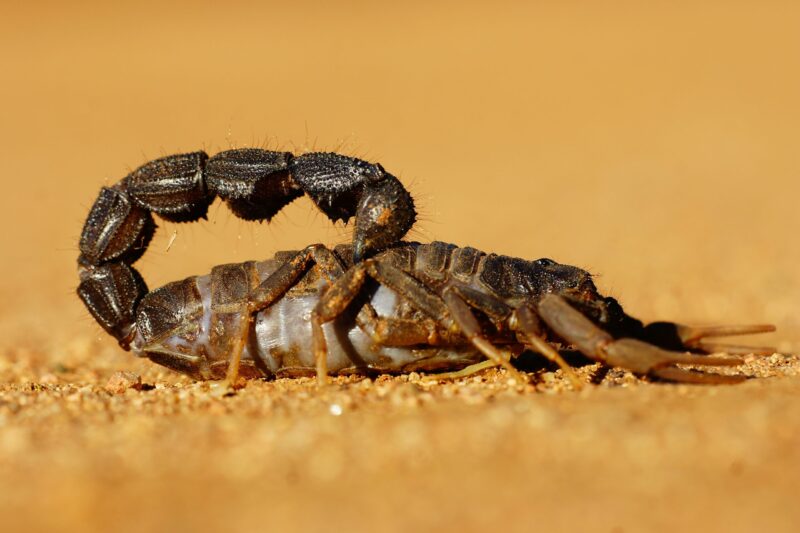
Read more: Scorpius the Scorpion is a summertime delight
Scorpions are arachnids
These creatures are not insects, but arachnids, like spiders, mites and ticks. All arachnids have eight legs, while insects have six legs.
Scorpions are arthropods that are part of the chelicerates. These animals have chelicerae; that is, they have “jaws.” They differ from other arthropods in part because they do not have antennae.
In addition to the eight legs and two chelicerae, scorpions also have two pedipalps, which are highly developed “pincers” that they use to detect and hold prey. As you can see in the images, the jaws of the scorpions are much smaller than those of spiders. Meanwhile, the pincers of scorpions are much larger.
Scorpions have two simple eyes on the top of their heads and two to five pairs of eyes (depending on the species) on the sides of their heads. However, scorpions cannot see very well, although the sensitivity of their eyes is among the highest of all arthropods. Thus, when hunting, they locate their prey through the smell and vibrations of the terrain.
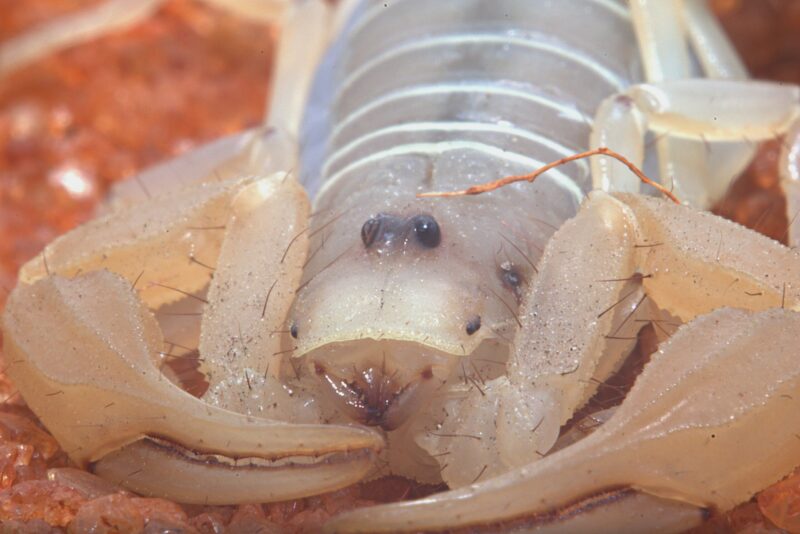
They have an adaptation power
Scorpions adapt easily to any climate. You can find scorpions in the desert, savannah, forest or jungle. The only place on the planet they do not inhabit is Antarctica, because it’s too cold. In addition, they live in burrows and nooks, and they like to bury themselves for camouflage. Therefore, they prefer to live in places where there is soil or sand and not in compact or frozen grounds.
There are about 2,000 species of scorpions, so their size and color vary greatly. The smallest scorpion measures 0.35 inches (9 millimeters), while the largest reaches 9 inches (23 centimeters) and weighs 2 ounces (56 grams).
Scorpions eat almost anything and can go an entire year without eating. They are nocturnal hunters and feed mainly on insects, spiders and other arthropods, but some eat larvae and earthworms. Larger scorpions can eat larger prey, such as small lizards or rodents.
Additionally, they can only ingest their food in liquid form, so part of the digestion is done outside the body. Scorpions hold their prey with their jaws and pincers and pour enzymes or digestive juices over it so the animal breaks down. Then they absorb it into their small mouths.
Many scorpions spend 92 to 97% of their lives immobile in burrows. Because they expend little energy, they can survive on few nutrients. They usually feed every two weeks, but in some cases, they go six to 12 months without eating anything. They can live an entire year eating a single annual insect.
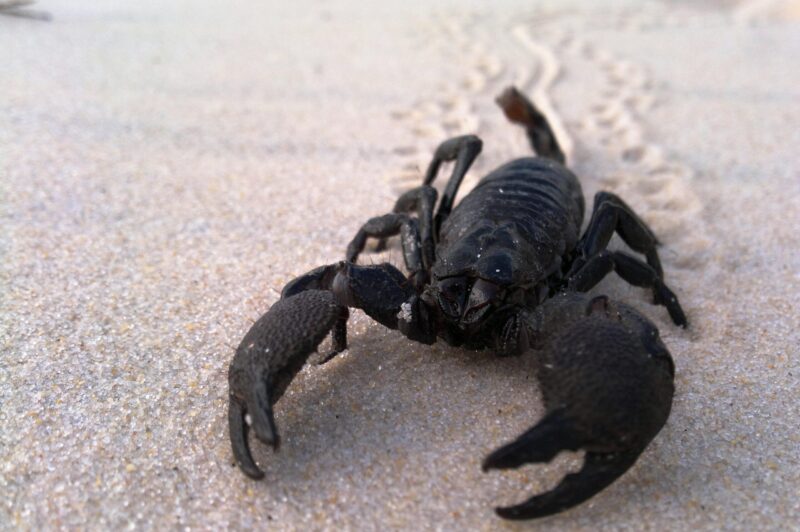
A fluorescent secret
Surprise! Adult scorpions glow in ultraviolet light. This is due to a thin, transparent external film that covers their exoskeleton, called the cuticle. This layer contains a fluorescent protein that gives them this extraordinary ability.
Scientists aren’t entirely sure what evolutionary advantages bioluminescence offers for scorpions. But theories include helping to protect them from sunlight, finding mates in the dark, deterring predators or protecting them from parasites.
In any case, this peculiarity makes it much easier to find scorpions. And it helps researchers who study them to find them more easily.
When a scorpion sheds its skin, its new cuticle is initially soft and does not contain the substance that causes fluorescence. But once this hard exoskeleton is formed, it is impressively durable, as scorpion fossils often still glow under ultraviolet light even millions of years later.
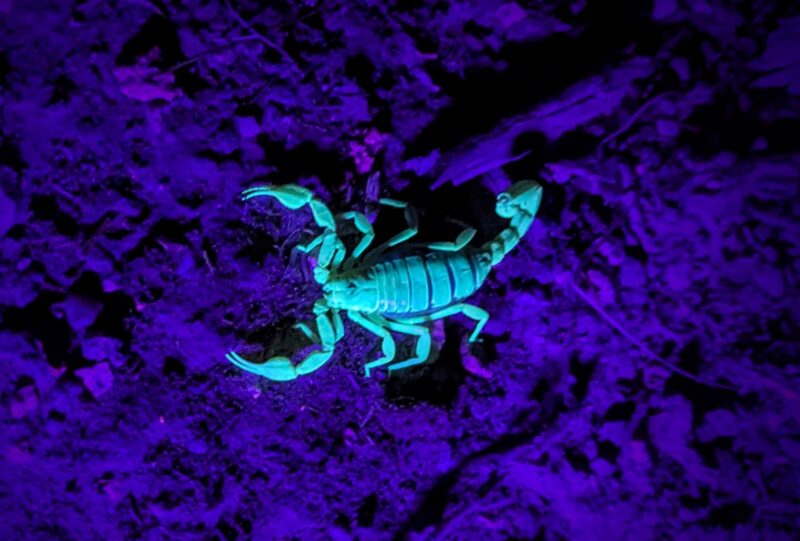
Scorpions decide when to use their venom
Absolutely all scorpions are venomous. The venom can include different toxins depending on the species, making it diverse and complex. Of the 2,000 known species, only about 30 or 40 are capable of killing humans. This figure represents a serious threat to human life in some parts of the world where medical treatment is difficult to access.
There are even newborn scorpions that already have venom. So don’t underestimate their danger. Scorpions use their venom both to subdue their prey and to protect themselves from predators, such as centipedes, birds, lizards and small mammals.
The toxins from the venom attack the victim’s nerve cells, causing paralysis and death. And did you know scorpions have self-control? Indeed, these animals decide when and how much venom to release with a sting. Typically, scorpions kill their prey with their pincers, resorting to poison only when necessary.
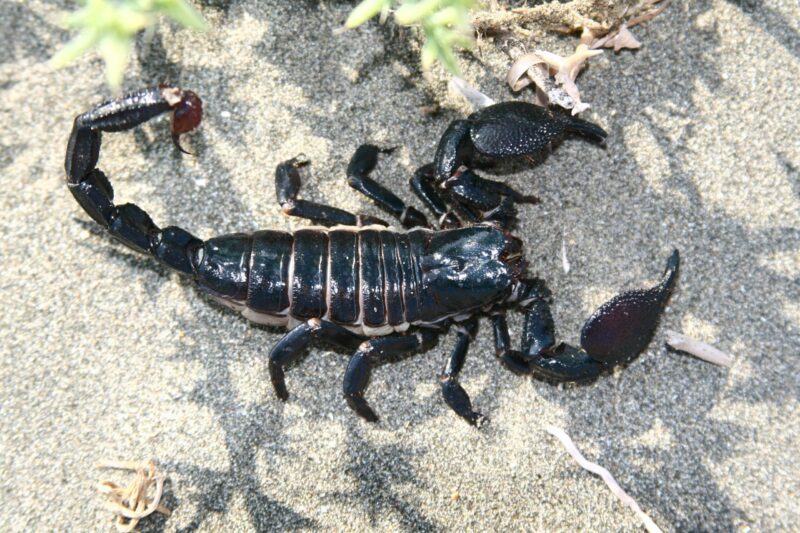
Its poison heals and kills
The curious thing about the poison is it can kill or save lives. Scientists have revealed many useful compounds hiding in scorpions’ venom, and they hope to discover many more.
The venom of some species contains antimicrobials that can be effective against many bacteria and fungi, as well as serving as a treatment for malaria. It also contains anti-inflammatory properties that could make it an effective treatment for arthritis. Other compounds have shown to be promising as immunosuppressants for the treatment of autoimmune disorders.
Its venom might even be able to cure brain cancer. There is a barrier that protects the brain and makes it difficult for drugs to reach the brain and treat neurological diseases and tumors. But, do you remember that scorpion venom affects nerve cells? Well, chlorotoxin is a protein in scorpion venom capable of overcoming the brain barrier. So it can transport drugs there.
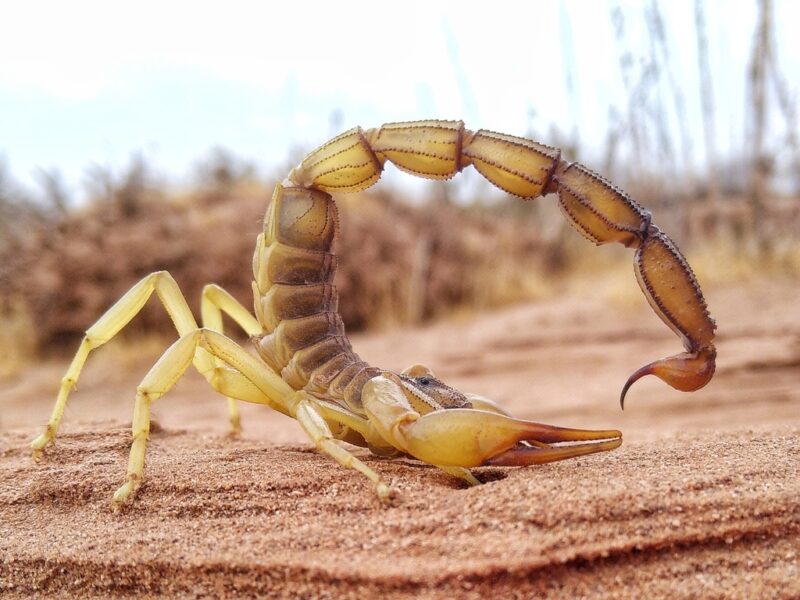
Scorpions can dance
Scorpions dance before mating. If the female shows interest in the male, they begin by confronting each other and then grabbing each other’s pincers. They move in circles or back and forth with their tails raised above their backs. The dance can last from minutes to hours.
At the end of the dance, the male deposits a type of blister with the sperm, called the spermatophore, on the ground and maneuvers with the female so that her genital area is over the spermatophore. When slight pressure is produced on it, the sperm mass is released.
Once mating is complete, the female often devours her partner, as so much exercise whets her appetite …
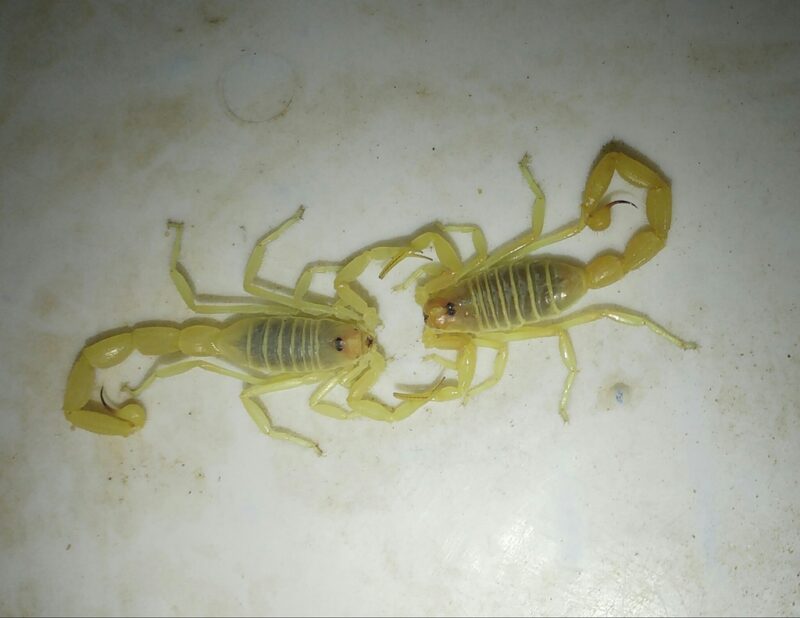
Are scorpions good parents?
Females can have up to 100 young in a single birth. Scorpion babies stay with their mother for two years in many species. Babies live on their mother’s back and become independent a few days after their first shedding.
Scorpions are viviparous, meaning they give birth to live young instead of laying external eggs. Babies look like adult scorpions, but they are much smaller and have a soft, white body. When they are born, they quickly climb onto their mother’s back, who fiercely defends them until it is time for them to move on.
However, a hungry mother scorpion will eat her own babies if resources are scarce.
Most arthropods have relatively short lifespans compared to other animals. Many insects live only weeks or months, but scorpions are among the longest-lived arthropods. In the wild, they usually live two to 10 years, but in captivity they have lived up to 25 years.
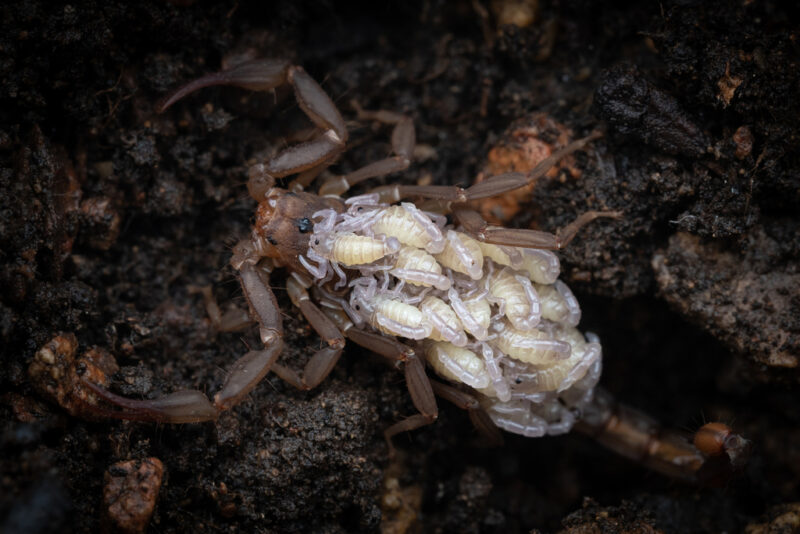
Bottom line: Scorpions are arachnids that have strong pincers and venomous stingers. All species are venomous, but their venom can also save lives.
Read more: The praying mantis is a predator: Lifeform of the week











